Introducing the most exclusive dating agency the world has ever seen. There was only one condition for entry: you had to be ROYAL
By the 53rd year of her reign, Queen Victoria had gained 38 living grandchildren – and it became her hobby to marry them off in a series of dynastic alliances designed to cement Britain’s place in the world.
Like a glorified puppeteer, she encouraged romance between her young associates. And if the romance didn’t work out, let them get married anyway!
What Does Love Have to Do With It?
You could call it the most exclusive dating agency in the world, with the only condition being that you had to be royal.
But as with all such ventures, Victoria had more than its fair share of disasters.
Queen Victoria with part of her extended family. She would eventually have 38 living grandchildren
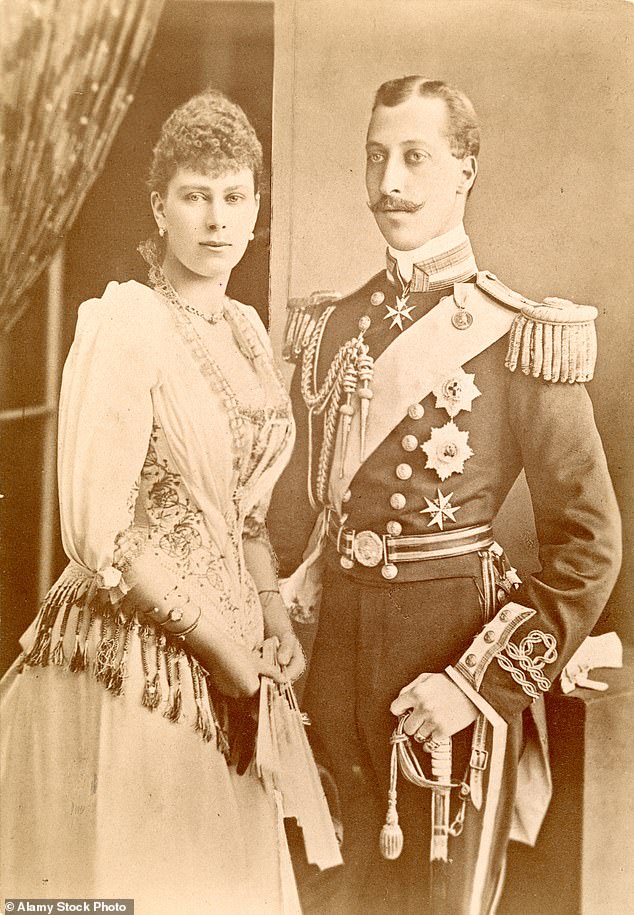
Prince Albert Victor, eldest son of Edward V II and grandson of Queen Victoria, photographed with his fiancée, Princess Victoria Mary of Teck. Albert Victor would die in 1892 before they could marry
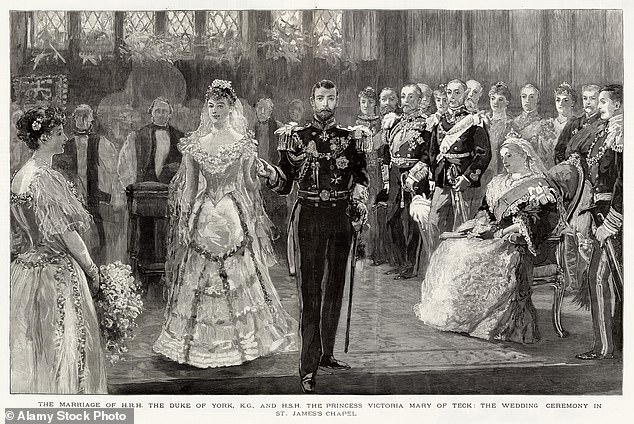
The wedding of George V – Albert Victor’s younger brother – and Princess Mary of Teck in the Chapel Royal at St James’s Palace in 1893
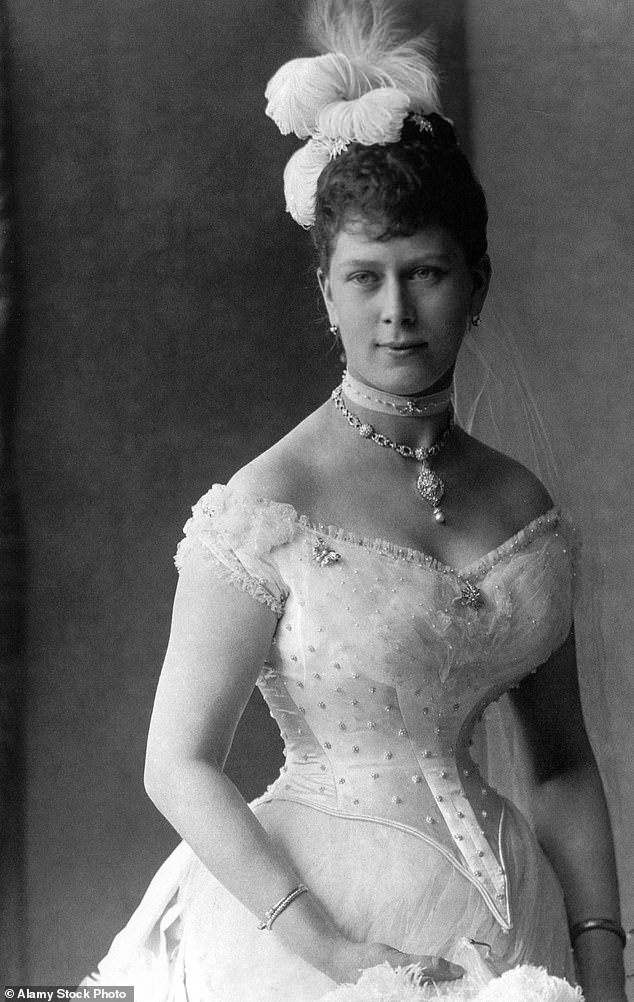
Princess Mary of Teck photographed around 1895. She would eventually become Queen Consort of King George V
Her main concern in the beginning was getting her grandson Eddy better. Eddy, the son and heir of Bertie, who would become King Edward VII, was formally known as Prince Albert Victor.
He was bisexual.
The royal family was so concerned about Eddy’s disastrous involvement in the Cleveland Street Scandal – in which post office telegram messengers doubled as rent boys – that the future king was ‘forced’ to marry the staid Princess Mary of Teck.
He had already gotten into trouble over a scandal over the death of a chorus girl and another over his relationship with a blackmailer, Maude Richardson.
According to his own confession, he was a carrier of a sexually transmitted disease.
Eager to please, Mary was either unaware of this exotic lifestyle or was willing to ignore it and went to extremes when an arranged marriage was discussed.
Eddy did not want to get married, but under great pressure he reluctantly agreed to a proposal.
Only his sudden death at the age of 28 from pneumonia put an end to this subterfuge. Mary left and married his little brother George instead.
Then there was Princess Elisabeth of Hesse, daughter of Victoria’s third child, Princess Alice.
It seemed like a great match when she got engaged to Grand Duke Sergei Romanoff of the Russian Imperial Family, but it was a disaster from the start.
Her supposedly devoted husband had affairs with non-commissioned officers in his regiment.
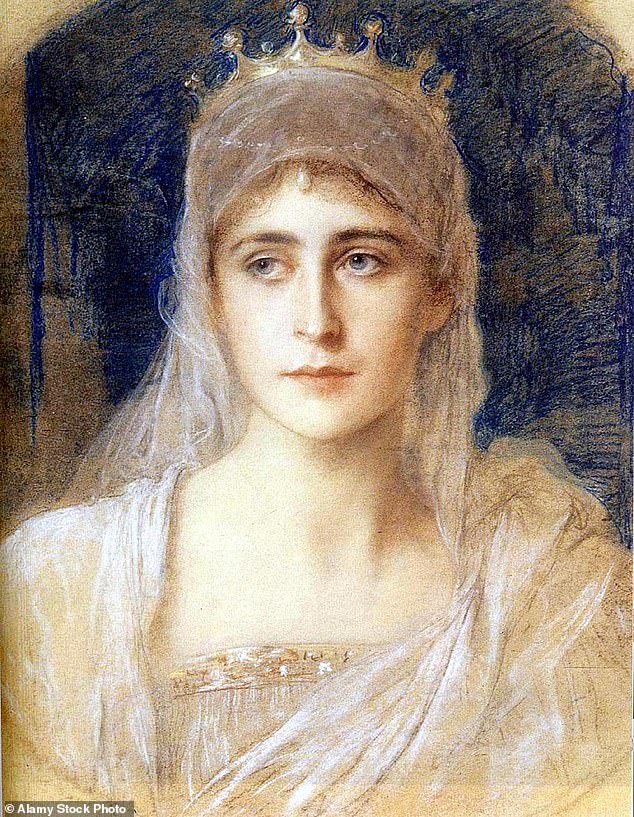
Princess Elisabeth of Hesse, granddaughter of Victoria, became Grand Duchess Elisabeth of Russia
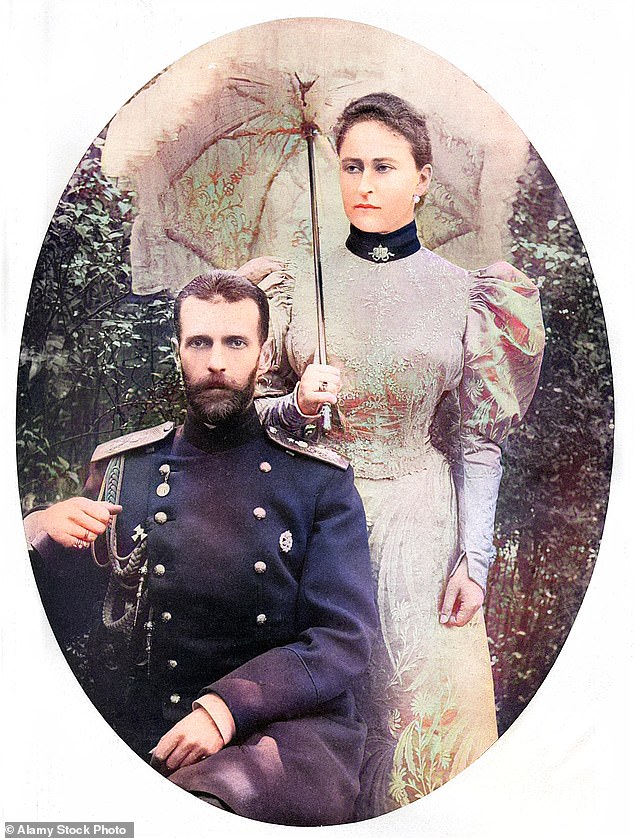
Princess Elisabeth of Hesse with husband Grand Duke Sergei Alexandrovich of Russia
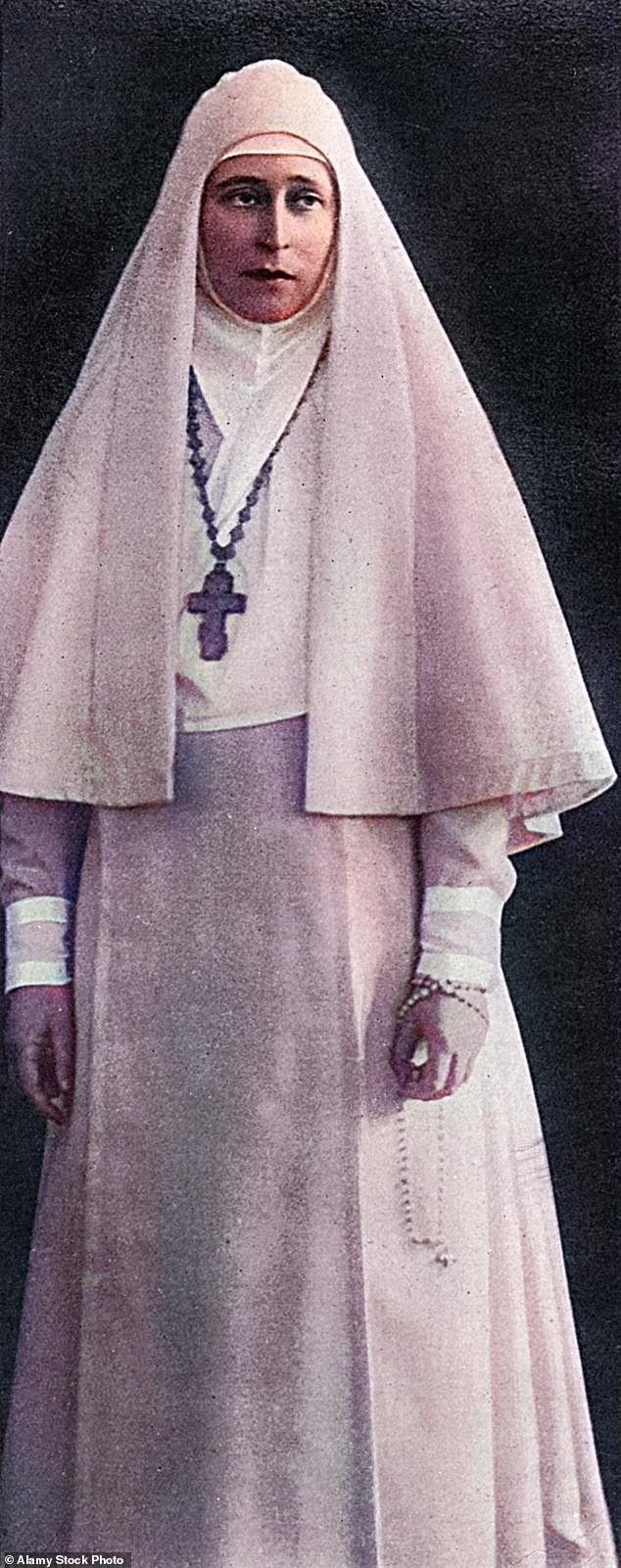
Princess Elisabeth of Hess, pictured, founded her own monastery in Moscow, dedicated to the Order of Martha and Mary, after the murder of her husband, Grand Prince Sergei
She bravely pretended to the family at home that everything was fine, but Victoria got the picture: “If people are very happy, they don’t have to tell others.”
Elisabeth became a nun. So that was another failure.
Just as disastrous was the alleged love match between Victoria’s granddaughter, Princess Marie of Edinburgh, and King Ferdinand of Romania.
Marie, better known as Missy, was a headstrong girl of great beauty who, at the age of 16, rejected the marriage proposal of her cousin George, who would later become King George V.
Queen Victoria had given her blessing to the romance, but later wrote: “George lost Missy by waiting and waiting.”
Yet before her seventeenth birthday she was engaged to the characterless Ferdinand.
It wasn’t a love match, especially not in the bedroom – “A cruel trap of innocence,” Missy described it.
And to her husband she wrote: ‘It is a pity that we had to waste so many years of our youth learning to live together.’
Nevertheless, the couple had children – although when she asked for chloroform to ease the pain of the first birth, this was denied by her Romanian doctors, who declared that ‘women must pay in agony for the sins of Eve’.
Missy took revenge with a series of lovers, including the country’s Prime Minister, a reckless Canadian adventurer named ‘Klondike’ Joe Boyle, and the owner of The Observer, Lord Astor.
She became a formidable spokesperson for her adopted country and, despite its remoteness, became world famous and was immortalized by the American humorist Dorothy Parker, who quipped:
Oh, life is a glorious cycle of songs, a medley of extemporanea; And love is something that can never go wrong; And I’m Marie from Romania.
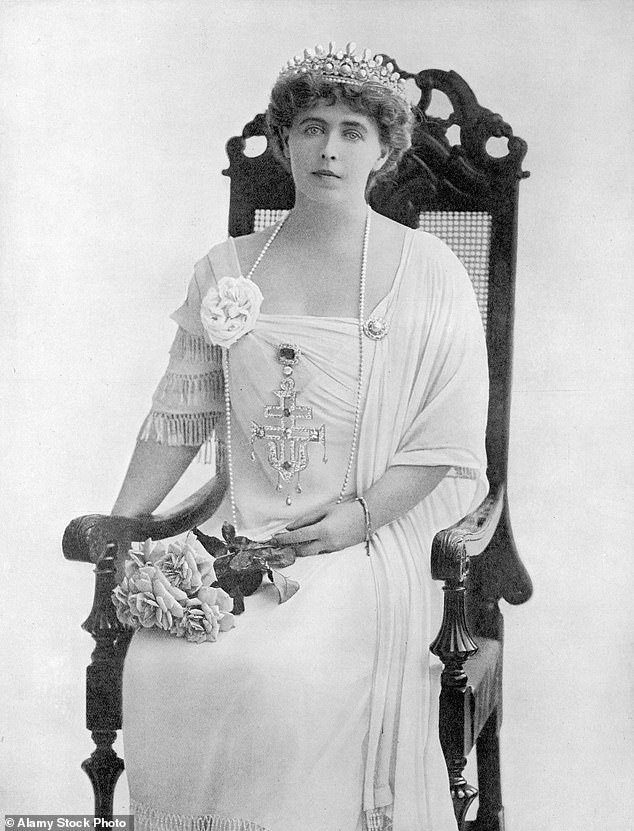
Marie, better known as Missy, was a headstrong girl of great beauty who, at the age of 16, rejected the marriage proposal of her cousin George, who would later become King George V.
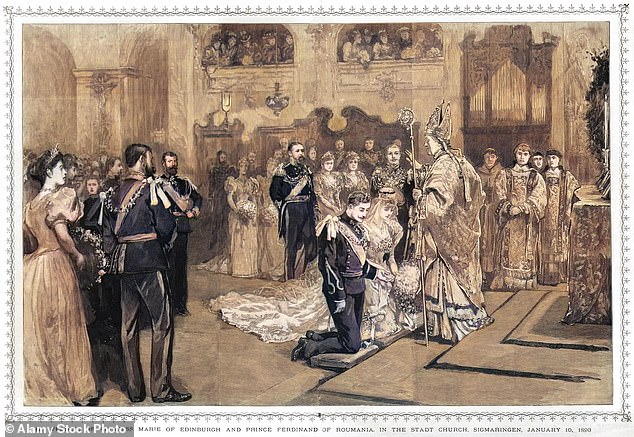
The wedding of Princess Marie of Edinburgh and Prince Ferdinand of Romania in 1893 in Sigmaringen in southern Germany

Things didn’t start well for Princess Victoria Eugenie and her wedding to King Alfonso of Spain in Madrid.
Someone threw a bomb disguised as a bridal bouquet into her open carriage and although she was unharmed, fifteen others died and many more were injured.
Her wedding dress was spattered with the blood of a mounted guard who rode alongside the carriage.
Introducing her bright royal future, 18-year-old Victoria Eugenie, better known as Ena, had enjoyed a three-day romance with Alfonso at a secret location on the Spanish border, if that’s the word, before he took her away. home to meet his mother.
Things went well enough to announce an engagement, but only after Ena agreed to convert to Roman Catholicism.
That decision cost her her place in the order of succession to the British throne, but since she was about to become Queen Ena of Spain, it hardly mattered.
Unfortunately, things quickly went downhill in the marriage after she gave birth to her first child, who was discovered to have hemophilia.
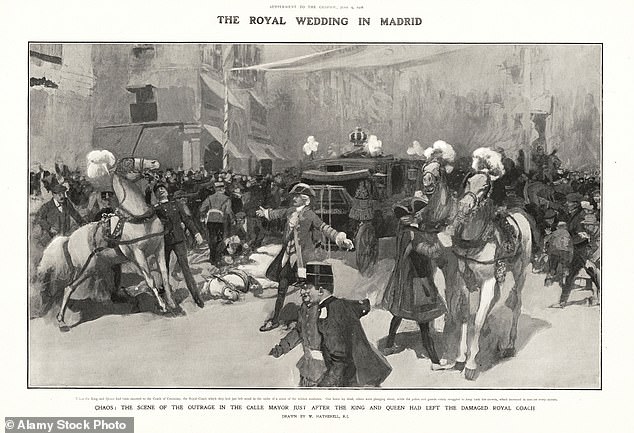
King Alfonso and Queen Victoria Eugenie’s royal wedding in Madrid got off to a catastrophic start – with an assassination attempt
This condition, also known as the royal disease, so terrified Alfonso that, although the couple had five more children, he became a serial philanderer.
And when General Franco declared Spain a republic in 1931, the couple fled the country – and parted forever.
Many more disasters – and some successes – would follow from Queen Victoria’s exclusive marriage agency.
It took a while for Europe to recover.
